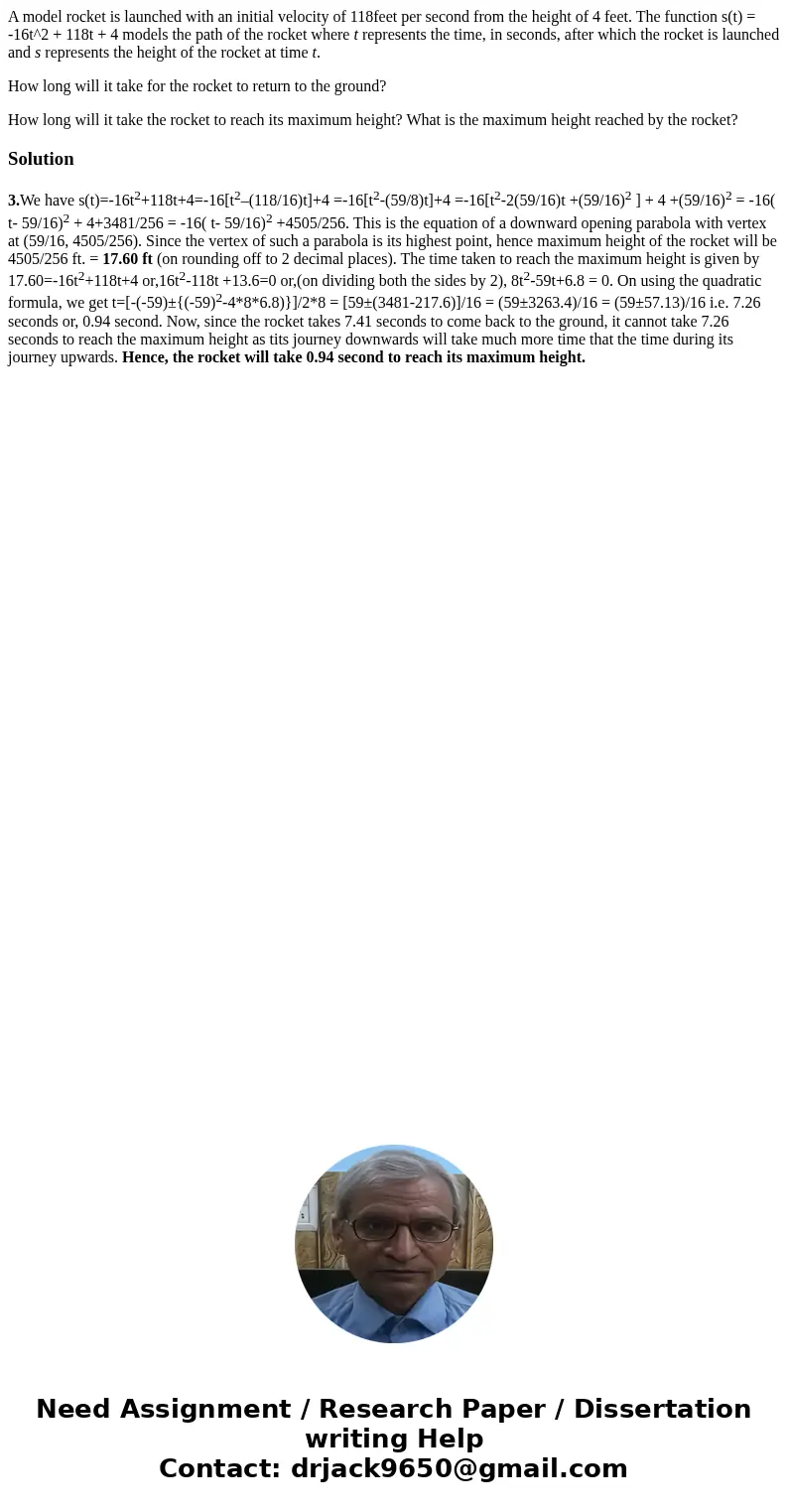A model rocket is launched with an initial velocity of 118fe
A model rocket is launched with an initial velocity of 118feet per second from the height of 4 feet. The function s(t) = -16t^2 + 118t + 4 models the path of the rocket where t represents the time, in seconds, after which the rocket is launched and s represents the height of the rocket at time t.
How long will it take for the rocket to return to the ground?
How long will it take the rocket to reach its maximum height? What is the maximum height reached by the rocket?
Solution
3.We have s(t)=-16t2+118t+4=-16[t2–(118/16)t]+4 =-16[t2-(59/8)t]+4 =-16[t2-2(59/16)t +(59/16)2 ] + 4 +(59/16)2 = -16( t- 59/16)2 + 4+3481/256 = -16( t- 59/16)2 +4505/256. This is the equation of a downward opening parabola with vertex at (59/16, 4505/256). Since the vertex of such a parabola is its highest point, hence maximum height of the rocket will be 4505/256 ft. = 17.60 ft (on rounding off to 2 decimal places). The time taken to reach the maximum height is given by 17.60=-16t2+118t+4 or,16t2-118t +13.6=0 or,(on dividing both the sides by 2), 8t2-59t+6.8 = 0. On using the quadratic formula, we get t=[-(-59)±{(-59)2-4*8*6.8)}]/2*8 = [59±(3481-217.6)]/16 = (59±3263.4)/16 = (59±57.13)/16 i.e. 7.26 seconds or, 0.94 second. Now, since the rocket takes 7.41 seconds to come back to the ground, it cannot take 7.26 seconds to reach the maximum height as tits journey downwards will take much more time that the time during its journey upwards. Hence, the rocket will take 0.94 second to reach its maximum height.

 Homework Sourse
Homework Sourse